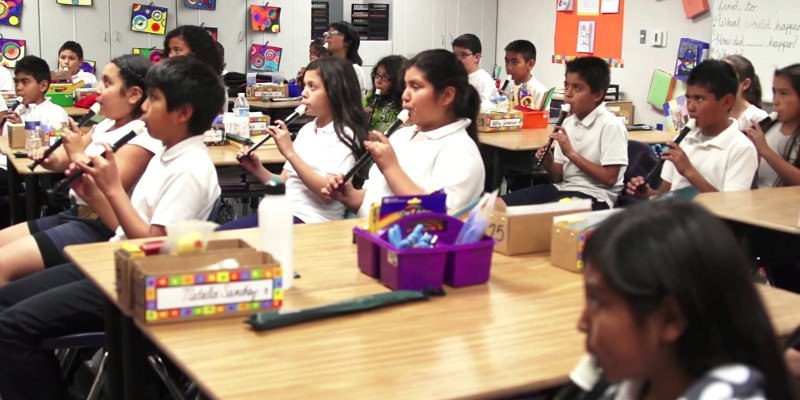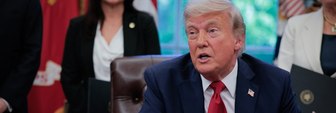Americans tend to support charter schools and widely believe that schools can have a transformative impact on people's prospects
Since the first charter school law was passed in Minnesota in 1991, thousands of charter schools with millions of students have emerged around the country. Charter schools are schools which receive government funding to provide education for local students, but which are not managed by the local board of education. In recent years charter schools have provoked bitter conflict in certain cities, and problems with charter schools in Detroit have highlighted the limited accountability charter schools face.
The latest research from YouGov shows that nearly half of Americans (46%) support charter schools, while only 25% oppose them. Support is strongest among Republicans (58%), while Democrats (39% to 36%) are more divided. Support for charter schools is also higher among the wealthiest Americans, those earning over $100,000 a year (60%) than it is among the poorest who earn under $50,000 a year (45%).
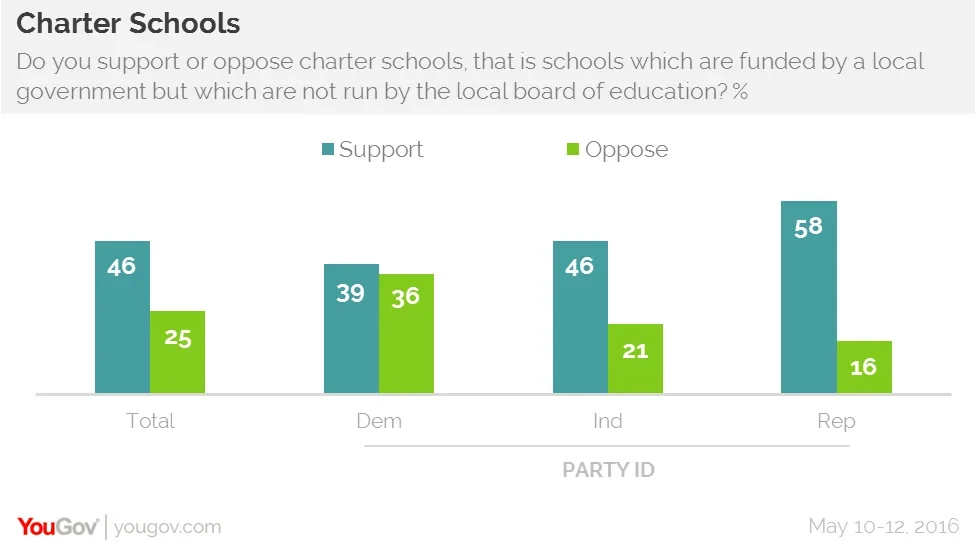
Though charter schools are now widespread across the country, many areas prohibit charter schools from being run by for profit corporations, instead of non-profit organizations. Americans narrowly tend to say, 37% to 30%, than only non-profits should be allowed to run charter schools. Both Democrats (49%) and independents (36%) are more likely to say profit making companies shouldn't run schools, but 44% of Republicans say that for-profit groups should be allowed to run charters.
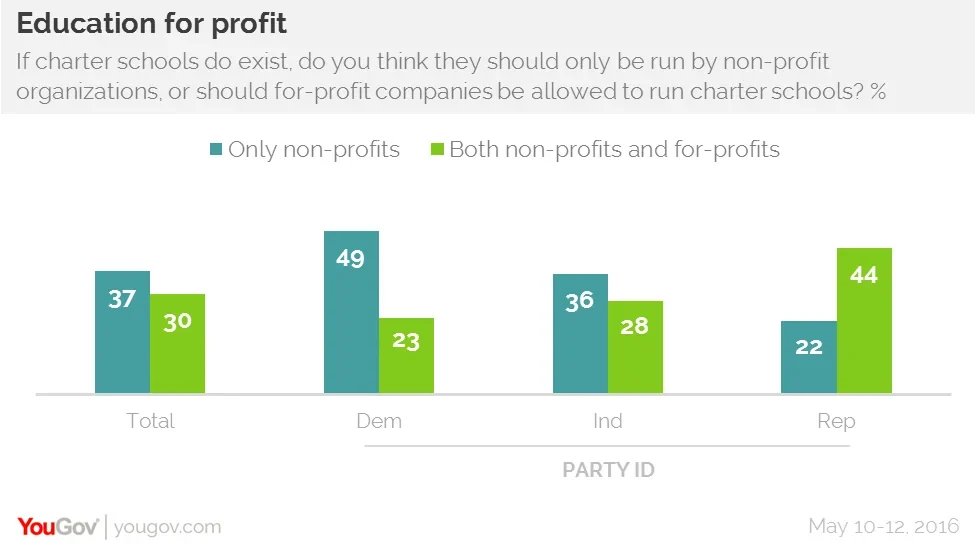
Overall, Americans have significant faith in the ability of schools and education to transform the lives of people. 71% say that good teachers and a well run school can have a transformative effect. Only 29% of Americans say that social problems, such as poverty and poor parenting, are such insurmountable problems that schools cannot make much of a difference. Opponents of charter schools are only slightly more likely than supporters to doubt the potential impact of schools.
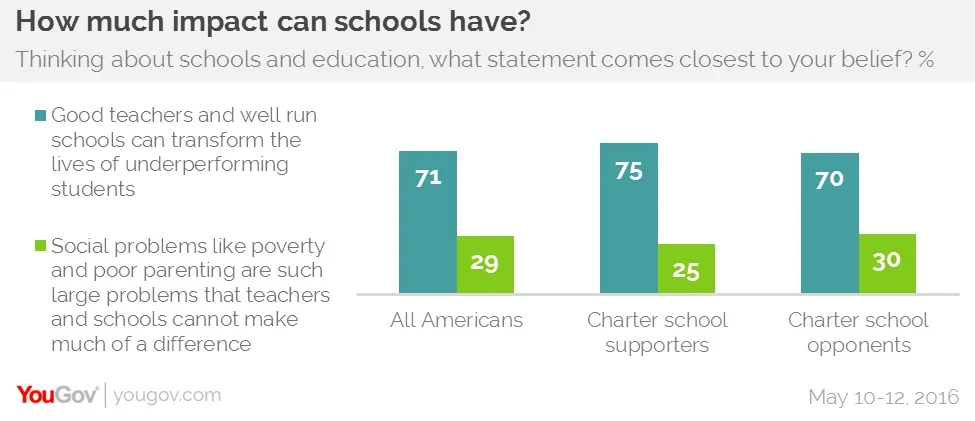
<PDFs>
